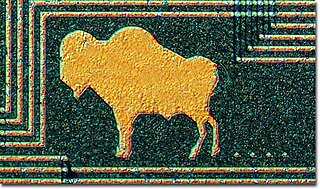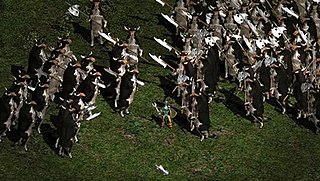 W
WAn Easter egg is a message, image, or feature hidden in software, a video game, a film, or another, usually electronic, medium. The term used in this manner was coined around 1979 by Steve Wright, the then-Director of Software Development in the Atari Consumer Division, to describe a hidden message in the Atari video game Adventure, in reference to an Easter egg hunt. The earliest known video game Easter egg is in Moonlander (1973), in which the player tries to land a spaceship on the moon; if the player flies horizontally enough, they encounter a McDonald's restaurant and if they land next to it an astronaut will visit it instead of standing next to the ship. The earliest known Easter egg in software in general is one placed in the "make" command for PDP-6/PDP-10 computers sometime in October 1967–October 1968, wherein if the user attempts to create a file named "love" by typing "make love", the program responds "not war?" before proceeding.
 W
WA113 is an inside joke and Easter egg in media developed by alumni of California Institute of the Arts, referring to the classroom used by graphic design and character animation students including John Lasseter, Tim Burton, Michael Peraza, and Brad Bird. Bird first used it for a license plate number in the "Family Dog" episode of Amazing Stories. It has appeared in other Disney movies and almost every Pixar movie.
 W
WChip art, also known as silicon art, chip graffiti or silicon doodling, refers to microscopic artwork built into integrated circuits, also called chips or ICs. Since ICs are printed by photolithography, not constructed a component at a time, there is no additional cost to include features in otherwise unused space on the chip. Designers have used this freedom to put all sorts of artwork on the chips themselves, from designers' simple initials to rather complex drawings. Given the small size of chips, these figures cannot be seen without a microscope. Chip graffiti is sometimes called the hardware version of software easter eggs.
 W
WThe secret cow level, or simply the cow level, is a level featured in the action role-playing hack and slash dungeon crawler video game series Diablo, developed and published by Blizzard Entertainment. It first appears as postgame content in 2000's Diablo II, where it is officially known as the "Moo Moo Farm". Players may access the level after collecting a special combination of items to conjure a portal leading to the level. The player character is confronted upon arrival by a large horde of armed anthropomorphic cows led by a boss character called the "Cow King".
 W
WThe Dinosaur Game is a built-in browser game in the Google Chrome web browser. The player guides a pixelated Tyrannosaurus rex across a side-scrolling landscape, avoiding obstacles to achieve a higher score. The game was created by Sebastien Gabriel in 2014, and is intended to be accessed by hitting the space bar when Google Chrome is offline.
 W
WThe technology company Google has added Easter eggs into many of its products and services, such as Google Search, YouTube, and Android since at least 2000.
 W
WA Hidden Mickey is a representation of Mickey Mouse that has been inserted subtly into the design of a ride, attraction, or other location in a Disney theme park, Disney properties, animated film, feature-length movie, TV series, or other Disney product. The most common Hidden Mickey is a formation of three circles that may be perceived as the silhouette of the head and ears of Mickey Mouse, often referred to by Disney aficionados as a "Classic Mickey". Mickeys may be painted, made up of objects, or be references such as someone wearing Mickey Mouse Club ears in a painting. Hidden Mickeys can take on many sizes and forms.
 W
WNuclear Gandhi is an Internet meme and an urban legend about the video game Civilization. According to the legend, there was a bug in Civilization that eventually forced the pacifist leader Mahatma Gandhi to be extremely aggressive and to use nuclear weapons heavily.
 W
WReady Player One is a 2018 American science fiction adventure film based on Ernest Cline's novel of the same name. Directed by Steven Spielberg, from a screenplay by Zak Penn and Cline, it stars Tye Sheridan, Olivia Cooke, Ben Mendelsohn, Lena Waithe, T.J. Miller, Simon Pegg, and Mark Rylance. Set in 2045, much of humanity uses the OASIS, a virtual reality simulation, to escape the real world. The orphaned Wade Watts finds clues to a contest that promises the ownership of the OASIS to the winner, and he and his allies try to complete it before an evil corporation can do so.
 W
WThe Wilhelm scream is a stock sound effect that has been used in a number of films and TV series, beginning in 1951 with the film Distant Drums. The scream is usually used when someone is shot, falls from a great height or is thrown from an explosion. The sound is named after Private Wilhelm, a character in The Charge at Feather River, a 1953 Western in which the character gets shot in the thigh with an arrow. This was its first use following its inclusion in the Warner Bros. stock sound library, although The Charge at Feather River is believed to have been the third film to use the effect. The scream is believed to be voiced by actor Sheb Wooley.